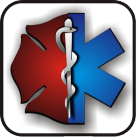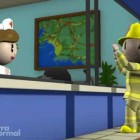The recent resignation of Dr. Juliette Saussy the medical director of Washington DC Fire and EMS has been a boulder dropped in the lake of EMS that is sending ripples far and wide. After her announcement and the letter accompanying her resignation was made public it seem that just about everyone has had a look at what she had to say, and what it means to specific services as well as our industry. Not wanting to feel left out, I felt that it was my turn to do the same. There was not much in Dr. Saussy’s letter that surprised me. Many of the issues that she brought to light were ones that have been there for years, and have been known about for years but commonly were just brushed under the rug. To expand on that a bit, a lot of the problems pointed out in the letter closely resemble problems pointed out to me by friends working in a number of different surfaces around the country. You cannot blame Dr. Saussy for the decision that she made. As medical director, the ultimate responsibility of who does and does not practice within her system rests on her. She is a woman with a long standing reputation as an innovative, aggressive, and involved medical director. Her capture by DCFEMS was one that should have been seen as a huge step forward for the department. The only question that fire department leadership should have been asking following the hiring should have been “Tell us what to do next, doctor.” Instead, Dr. Saussy was met with resistance and the usual “that will not work here.” She was forced to go head to head with a union that has done so much to hold back its department, not to mention its “sister” union representing the single role providers serving Washington, DC. And then there is the proposed plan involving American Medical Response. First, let me start out by saying that while some might not like AMR or their business practices, they really are one heck of a company. I worked with them for 12 years, and although some of the leadership in the division that I worked...
Paramedics and Higher Education

Oct 14, 2014
Once again, the topic of “should we strive for higher education?” has come up, and once again I need to come out in support of this. And it has nothing to do with the fact that I currently possess a degree. Many wonder what it will do for our bank accounts. They ask for evidence of how increasing education will result in increased income at the street level. To me, it is the simple concept of supply and demand. Currently, it is so easy to get a job in EMS. Look at larger companies like AMR, which almost have a revolving door of providers. We used to put on big recruiting class and would usually retain about 60% of our hires six months out. There never seemed to be a shortage of EMTs to staff trucks. Increasing the knowledge base of providers means that not everyone will want to invest the time into the field, and will result in the people getting into the field being the people who want to make a career out of the field. Fewer providers will be available at that level, so their skills will be more coveted. As a result, departments will pay more for their ability. In my eyes, there are three places that we need to increase our education. The first two have nothing to do with actually providing care but everything to do with understanding how our care affects our patient. We need more education in anatomy and physiology, and pathophysiology. Most paramedic programs that I have encountered do a barely adequate job with these topics. While most paramedics understand how diseases and conditions affect the body, we need more. Right now, most education revolves around that immediate emergency, as it should, but we could be well served with some additional knowledge about the body outside of our encounters with these patients. As we establish that stronger base, then we can expand the care that we provide, which is where my third topic comes in. With the growth and expansion of community paramedicine, paramedics need more education in after care. We need to understand what level of care goes into our patients after we intubate...
Minimum Wage and EMS

Sep 2, 2014
Last night, one of the major EMS news outlets (I cannot find which one this morning) posted a question on Facebook asking “What effect will raising minimum wage have on EMS?” Since we are days away from a planned strike of fast food workers, I felt like this was as good a time as any to take a look at the topic. While part of me hopes that some news outlet other than The Onion will post the headline “Fast Food Workers Strike, Americans Forced to Eat Healthy” my opinions on this topic are not quite so tongue in cheek. If you follow me on Twitter, or are friends with me on Facebook you will learn pretty quickly that I am not a fan of our President and more specifically his policies. I think the affordable care act has been a painful rollout and the promises made to appease those who opposed it, “if you like your plan you can keep your plan” specifically have been violated and scapegoated on the system itself rather than those who have set the now stringent regulations associated with the act. Now, there is a considerable push from many to raise minimum wage as high as $15, a wage that many EMTs in the field currently do not make. If this happens, the response by many EMS departments and companies might be surprising to some. Raising minimum wage is effectively a “war” on big business. People want a bigger slice of the pie that currently goes to the upper echelon of companies or their stakeholders and shareholders. This same structure exists in EMS but in many ways, we are handcuffed when it comes to how much money that we can make by the very people who are talking about raising the money that companies are expected to pay their workers. Ambulance reimbursement is a constant hot button topic at lobbying events and with EMS advocacy groups and in leadership forums. We, as an industry, are just getting by. If you want proof of that, look no further than Rural Metro ambulance after they declared bankruptcy in 2013 and are now getting ready to shut down their failing Indiana division. Or,...
Mergers and Acquisitions

Aug 22, 2014
Every day, I try to put aside some time for combing the internet and reading a variety of industry related articles. This week an older article from FireRescue1.com from July of 2012 that former Washington DC fire chief Dennis Rubin reposted called “5 reasons not to merge fire and police” caught my eye. The article presents arguments against combining police and fire departments. I read through the article and was able to draw a parallel between this topic and the argument against merging fire and EMS. Keep in mind that this is in no way a reflection of every single fire-based system on the map. Some do it very well but for each of those effective, progressive fire based EMS systems, I feel like I have found two who do it very poorly or worse, do not understand or care what they are getting into when they take over ambulance response. I invite you to read the full article by clicking here but here are some of the chief’s observations and my thoughts on them. “There are a multitude of examples where communities have fused the police and fire departments into one public safety agency. The motivating logic seems to be that neither department is busy enough to command the tax share needed t operate separate agency. The initial belief is that merging two costly departments into one will create a more efficient department, thereby saving big public bucks.” EMS and fire are often combined for the exact same reason. The fire departments are not busy enough so in theory, combining fire and EMS gives them the ability to handle an additional piece of the public safety workload. The workload that EMS brings in, however, is often ignored or it is not realized to be as involved and time consuming as it is. However, the transition of police duties into the fire and rescue department comes at a steep price that you will not find on a budget line-item spreadsheet. Intangibles such as organizational stress, personnel, resistance, and demoralization of the rank-and-file members of both departments are the major factors that will ensure this type of plan’s failure.” Take a close look at any fire and...
Podcast Episode 15: The Website, Nashville, and Nurses

Aug 18, 2014
This week, Scott takes some time to talk about the changes that have occurred to MedicSBK.com over the past couple of weeks. He then turns to a couple of hot button topics that have come to head over past week, specifically the incident in Nashville, Tennessee where a group of paramedics were suspended and then reinstated after pronouncing a patient who was still alive. Scott’s focus then turns to the announcement by a California nurses union that released their statement of opposition to Community Paramedicine. The topic sparked an interesting debate on Scott’s Facebook page and he shares some of the views with you. Firefighters medics who left dying patient under investigation. An incident where Scott and some of his coworkers made a big mistake. Full Disclosure. Paramedic vs. Nurse. The Doctor’s Definitive Edition. To download this week’s podcast, click this link! Otherwise, use the player...
Podcast Episode 13: The Generation Gap
On this week’s episode, Scott is joined by RJ Stine and William Random Ward to discuss the existing generation gap in the EMS community. The trio talk about some of the challenges faced by the new generation of paramedics and how preceptors can help that mentoring process. While many in the older generation focus on where we were, RJ, Random and Scott talk about where we are, and where we need to be in the future. To download this week’s podcast, follow this link! Otherwise, use the player...
Let’s Train Them
CPR is increasingly becoming a requirement for high school graduation throughout the country, and personally I could not be happier. I love seeing news stories about this topic. When we are dispatched to a cardiac arrest in our system, one of the first questions I ask myself is “is anyone doing CPR?” I usually find that compressions are being done in about one out of every three “workable” cardiac arrests. More times than not, the thing most often preventing CPR being done is the fact that the caller has difficulty getting the patient from where they are to the floor. The second most frequent one is that the caller is too scared or just unwilling or unable to do it because they are too hysterical. I completely understand this. EMS professionals walk into these situations with training and the expectation that they will be there to bring order to the chaos. It is what we do. It is part of who we are and what our profession is all about. One cannot have that same expectation of the general public. Should a bystander be willing to do CPR, and they are untrained, they will get a crash course on the phone of how to do hands only CPR in the form of prearrival instructions from an Emergency Medical Dispatch certified person on the other end of the phone. It is virtually impossible to make sure that the person on the other end of the phone is following the instructions as they should. Of those one third that get compressions, probably half of them are done well. The plus side though is something is better than nothing when it comes to cardiac arrest care. Here we sit in 2014 with a generation of people (that arguably I am on the older side of being part of) who are consumed by their cell phones. People live in their phones, and use them to make potential medical emergencies someone else’s problem. Gone are the days of people moving away from these sorts of things. They call, and then they stand around to see what happens. Rarely do people get involved and try to help. We need to...
Accountability for Providers
“I’m just a volunteer EMT.” Have you ever heard anyone say that? Neither have I. Just about every volunteer provider that I have encountered in my career, regardless of how long they have been doing it or what their dreams and aspirations actually are take a ton of pride in serving their community. As many readers already know, I come from a family full of volunteers and an area that up until about ten years ago, the area that I grew up in was almost 100% maintained by volunteer EMS. Sadly, volunteerism is on a decline, and there are many, many reasons for that. A few weeks ago, EMS 1 reposted an article and tried to tackle some of those reasons with a few really good articles. One article cites expanded EMT training for lack of volunteers. EMS 1 Editor in Chief Art Hsieh then wrote what I feel is an excellent reply pointing out a lack of change and evolution as the culprit. Both stories make some excellent points. In the past, I have written rather candidly about the problems as I see them that the New Jersey State First Aid Council presents to EMTs in my home state. Their organization demands different standards for staffing a volunteer ambulance than a paid ambulance to try and keep volunteer EMS alive. Essentially, they are trying to create a new level of care that is specific to their services resulting in them keeping the EMS system in New Jersey on life support. In many states EMT students are expected to learn more than they have ever been asked to before. They are asked to expand their assessment skills, provide more invasive treatments, and give medications that previously were reserved only for paramedics. To be able to properly understand how those medications work, a greater knowledge of body systems is also required. Enough is enough. Sure, obtaining an EMT certification takes more time now than it did even five years ago, but there is a good reason for that. No one is trying to circumvent the volunteer system in any state. The changes instead are in place to improve the level of care that patients receive...
Illinois Has the Answer!

Jun 6, 2014
Did you know that this week is National CPR Awareness Week? In some places, people are celebrating it the right way. Earlier this week, Governor Quinn of the State of Illinois signed into law a bill requiring high schools to add CPR and AED training to their curriculum. The bill was created in response to the death of Lauren Laman who died while practicing with the school’s dance team. Lauren received no prearrival CPR, and although there was an AED nearby, no one received it or thought to use it. Obviously, no one can really know if CPR and the AED would have definitively saved Lauren’s life but at least we would have given her a fighting chance had the skill and the device been used. The creation of this law is a great thing, and it’s about damn time that somebody somewhere finally got this one right. I remember back in the (late) 1990’s when I was in high school, our junior year health semester was dominated by first aid training. We learned CPR, but if I remember correctly, while we received the class, we did not receive cards in our pockets. Looking back, I guess it was better than nothing and a step in the right direction. Think about many of the cardiac arrests that we run. Someone has to call them in, right? Whether it is someone at home with the patient or someone in the street with the patient there is someone else there more times than not. Now, compare that number to the actual number of people who receive pre-arrival CPR. Emergency Medical Dispatch’s version of pre-arrival instructions are great, but there is nothing better in a situation like that than having the knowledge in your own head of what to do. With the introduction of cell phones, we have conditioned society to call in incidents and make them somebody else’s problem. It all led to what I liked to call the “third party caller not minding their own business” job. You know, those calls for the person sleeping on a park bench, or someone who “looks like” they might be in distress. Occasionally, that caller will stick around...
Some Thoughts on EMS Today
Now that I got my charger fixed for my Netbook I can finally share this post that I wrote on my train ride back from EMS Today 2014. Enjoy!! Here I sit on the train ready to head back home after another series of adventures at EMS Today. Although the vibe at this year’s conference was different than years passed, the one factor that remains constant is there are a number of people who are extremely motivated to do more than just spend their 40 hours on a truck, collect a paycheck, and go home. For the most part, the people who attend these conferences are doing so in the hopes that they become better clinicians both for themselves as well as their patients. Lines were drawn in the sand at this year’s EMS Today conference and the goals and direction was apparent from the get go. The major focus of many of the classes was what some call community paramedicine which others have termed mobile integrated healthcare. There were a number of classes about branding, data, attitudes, and expectations that should be important to a service as well as a paramedic as they prepare themselves to provide care outside of the traditional “emergency” environment so many of us are active in today. While the classes and churiculum are great, however, I want more. This year’s conference marked the 8th major one that I have attended dating back to EMS World EXPO in Dallas in 2010. I have seen a number of fads come and go. I remember just a few years ago when the exhibit hall was full of venders looking to sell everyone on the importance of their products when it came to prehospital ultrasound, something that a lot of us thought might have a practical use in the field. For the past two or three conferences, community paramedicine has been showing up more and more. I remember last year, when NAEMT’s EMS on the Hill Day was canceled, Chris and Anne Montera (then known as Anne Robinson) along with a team from MedSTAR in Texas lead by Matt Zavadsky held a half day workshop for the NAEMT delegates to talk about...
